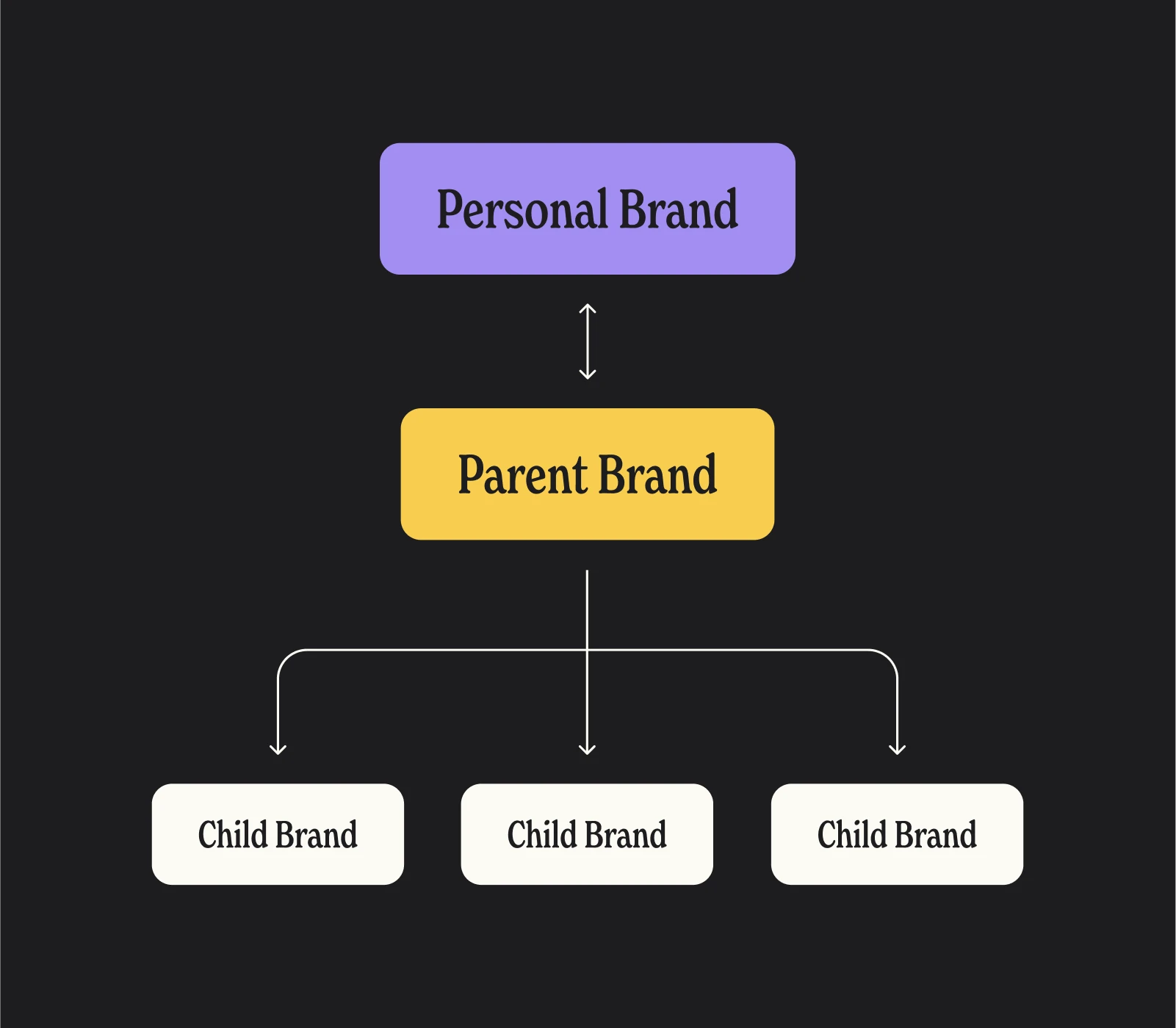
When Coca-Cola wants to launch a new product or business, they don't slap the Coke logo on everything and call it a day. They have Sprite, Fanta, Dasani, and dozens of other distinct brands under their corporate umbrella.
But when BMW launches a new car? It gets a letter and a number, that’s it.
This is called brand architecture, and it's how traditional companies organize their portfolio of brands to serve different markets, reduce risk, and maximize value.
But this model doesn’t quite work 1 to 1 for creator businesses, and from my vantage, creator businesses are constantly rewriting what parts of this traditional playbook work (and don’t work).
How traditional businesses do this
I won’t linger too much here, but it’s important context to understand how (and why) traditional brands build brand architecture.
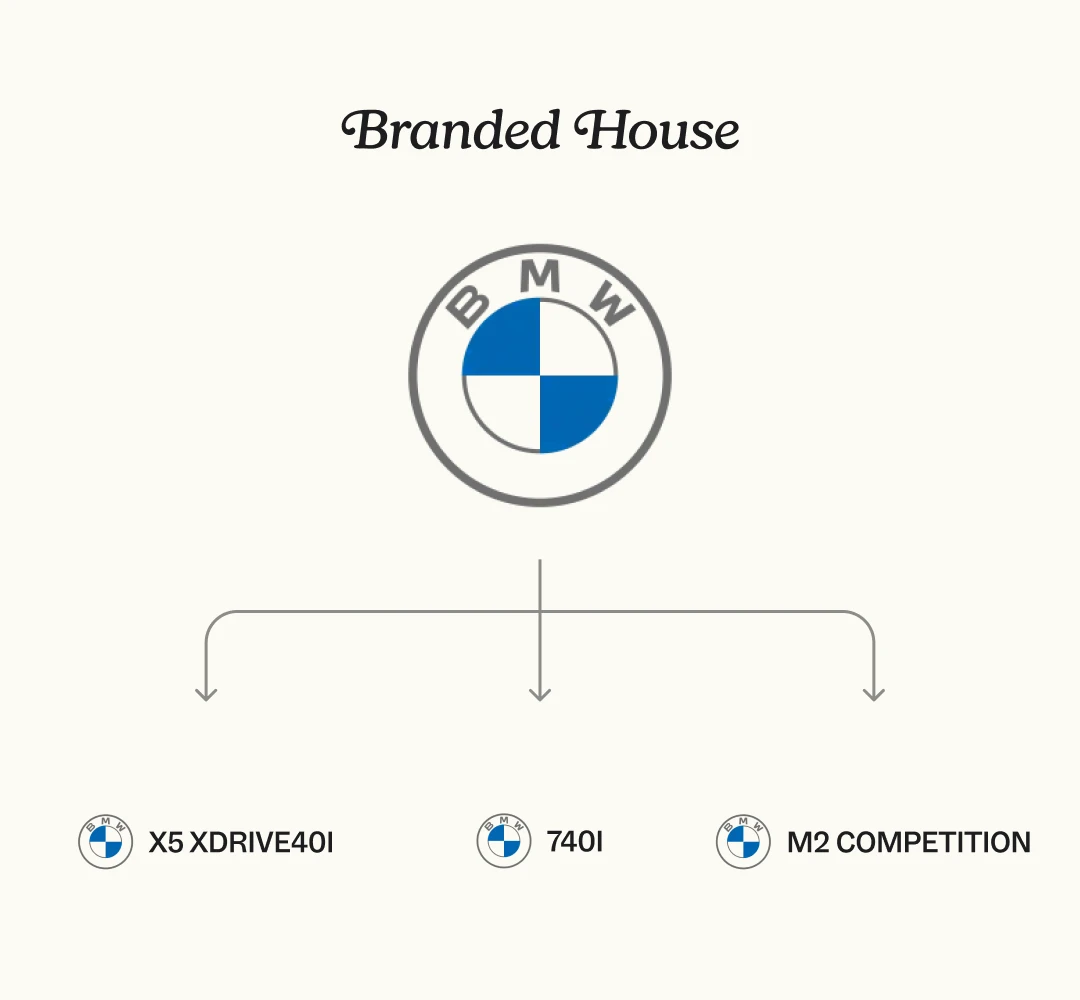
Pros
- Shared value proposition
- Builds equity in a single brand
- Cost effectiveness
Cons
- Hard to differentiate between products
- No ability to divest individual products
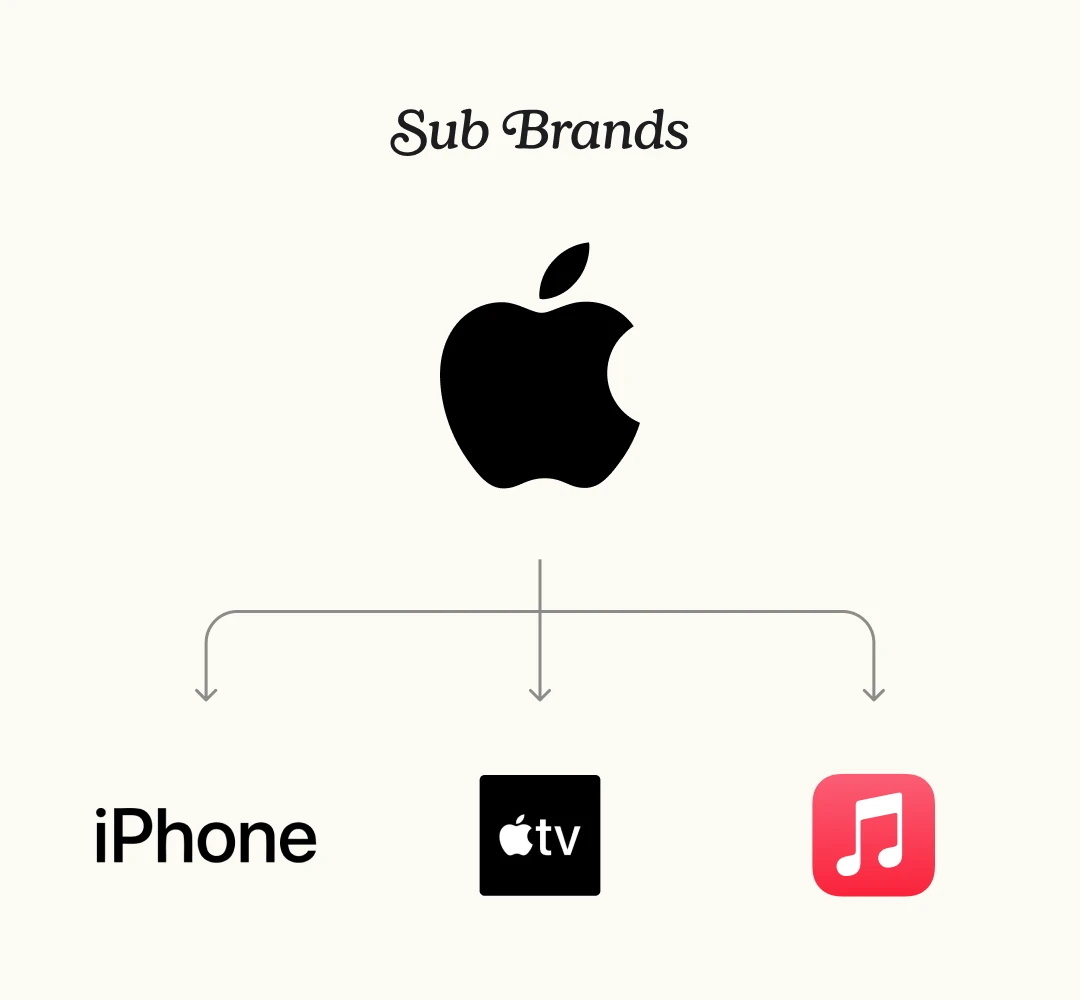
Pros
- Shares some brand equity and character
- Allows for different value propositions
Cons
- More visuals and messaging to manage
- More resources required
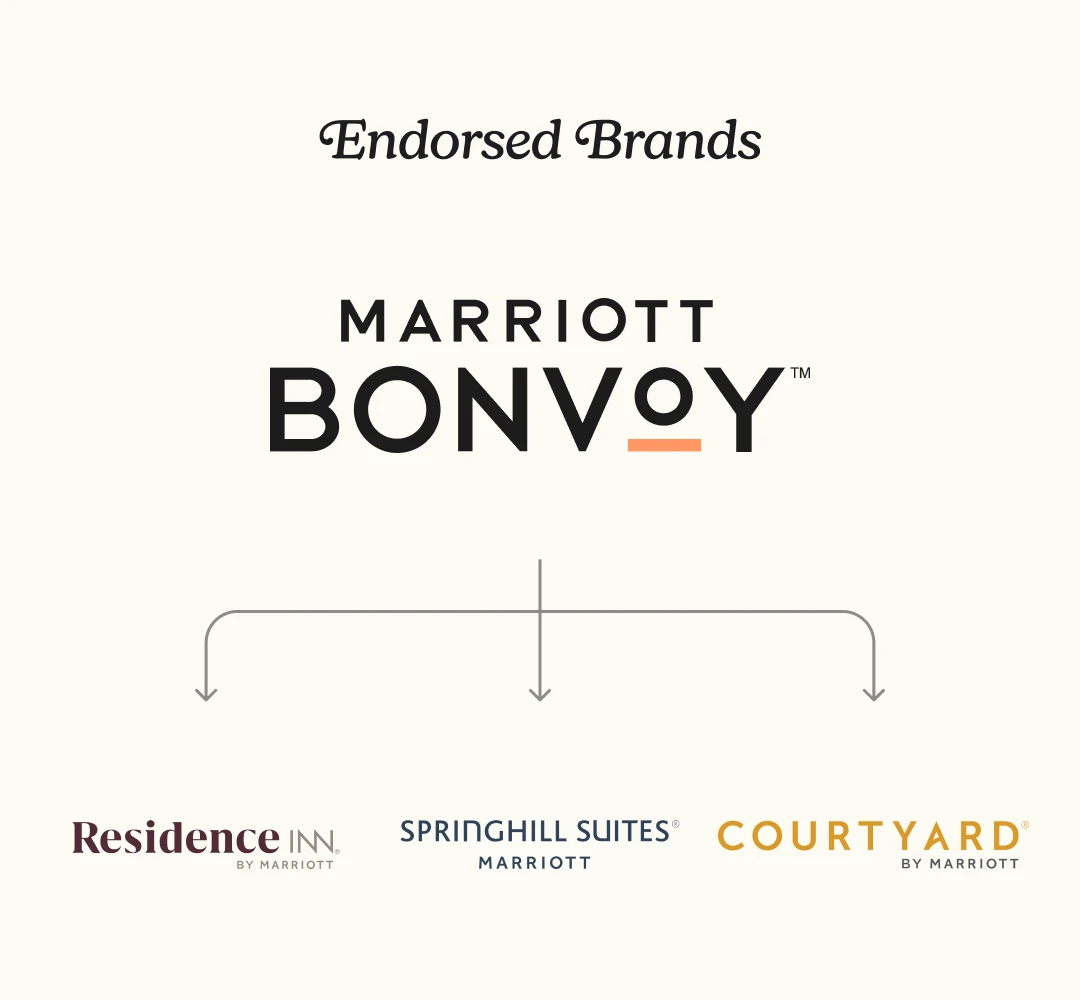
Pros
- Allows different value props and can serve different markets
- Leverages credibility of parent brand
Cons
- Complex and can be confusing for customers
- Requires significant resources
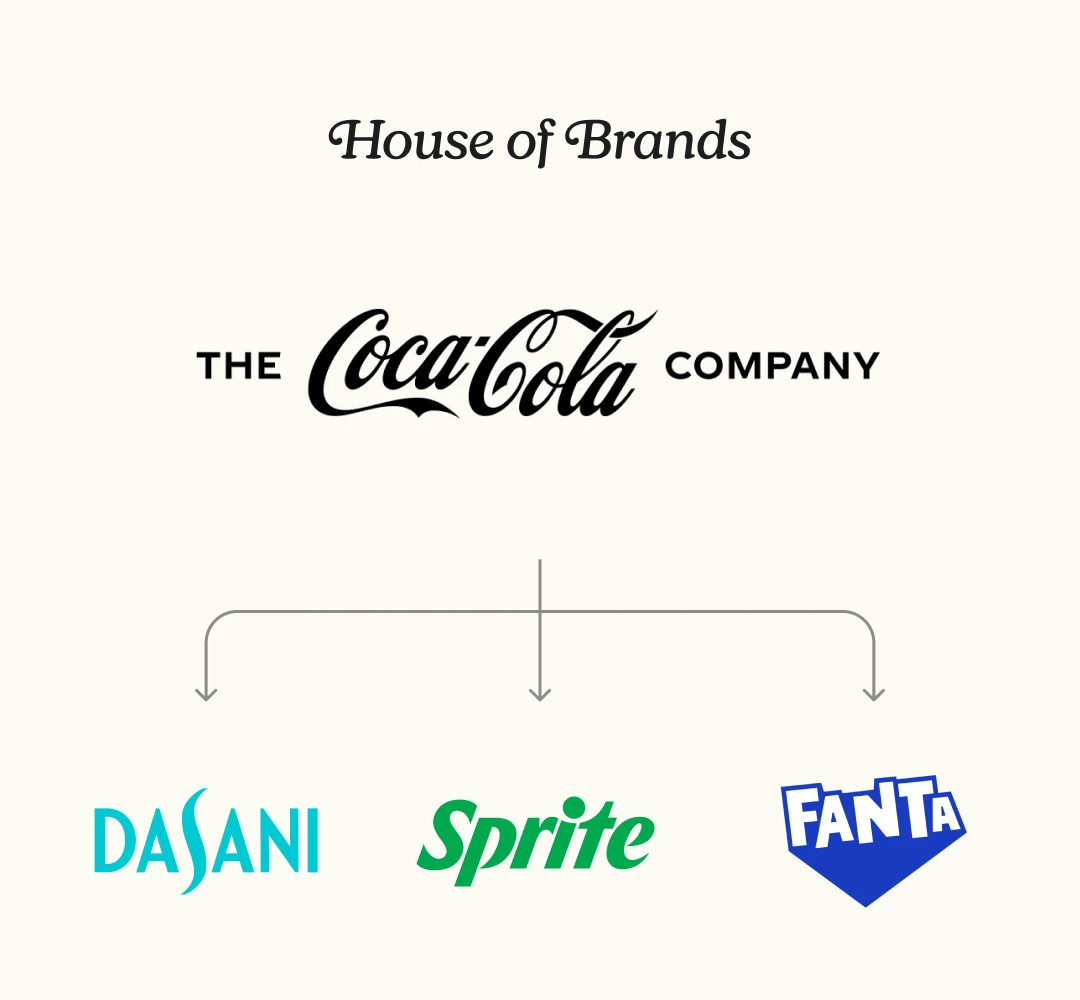
Pros
- Can address any market
- Failures don’t damage the parent brand
Cons
- Expensive to execute and maintain
- Doesn’t leverage parent brand
The Biggest Difference: Creator Brands Add a Third Layer
Traditional businesses usually have a two-tier structure:
- Parent brand (Procter & Gamble)
- Child brands (Tide, Pampers, Crest)
Creator businesses add a third layer:
- Personal brand (the creator)
- Parent brand (the company)
- Child brands (the products)
Because so much of a creator brand’s value comes from audience connection, thinking strategically about brand architecture becomes even more critical when scaling, selling, and building long-term value.
Five Ways Creators Structure Their Brand Architecture
Creators are evolving this structure in real time, so there isn’t decades of precedent. These are the models that show up most often:

Example:
- Personal brand: Ryan Trahan
- Parent brand: Ryan Trahan
- Child brands: JOYRIDE, merchandise
Pros:
- Simple to manage
- Faster to scale
- Fewer resources required
- Immediate trust transfer to products
Cons:
- Hard to separate business from the individual
- Difficult to sell or exit
- Limited by personal capacity
- All risk tied to one brand
Best for: Creators who want to stay at the center of their business and aren’t planning to scale beyond personal involvement.
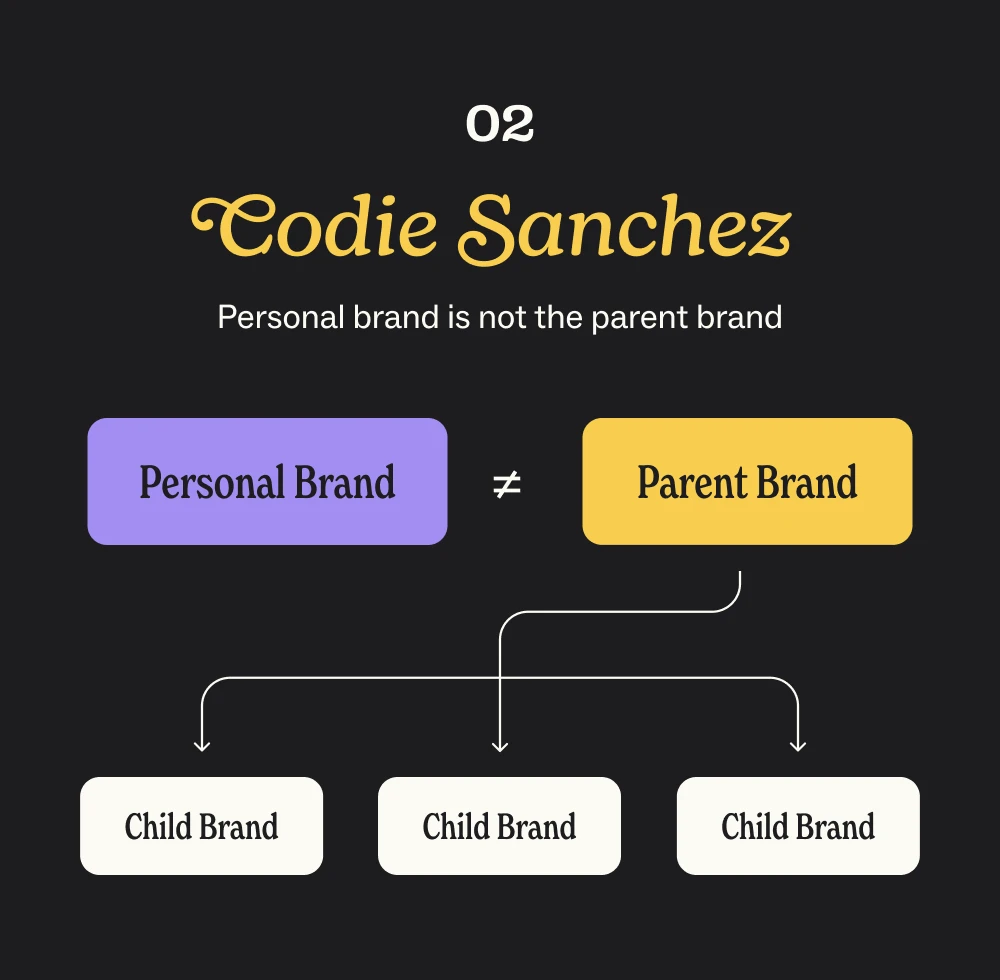
How it works: The personal brand exists separately from a parent company brand, which owns the products.
Example:
- Personal brand: Codie Sanchez
- Parent brand: Contrarian Thinking
- Child brands: Main Street Accelerator, SMB Boardroom, Contrarian Community
Pros:
- Creates a sellable asset separate from the individual
- Scales beyond personal involvement
- Supports team growth under the parent brand
Cons:
- More complex to manage
- Requires building two brands at once
- Higher resource requirements
- Slower initial growth
Best for: Creators building something larger than themselves with potential for future exits.
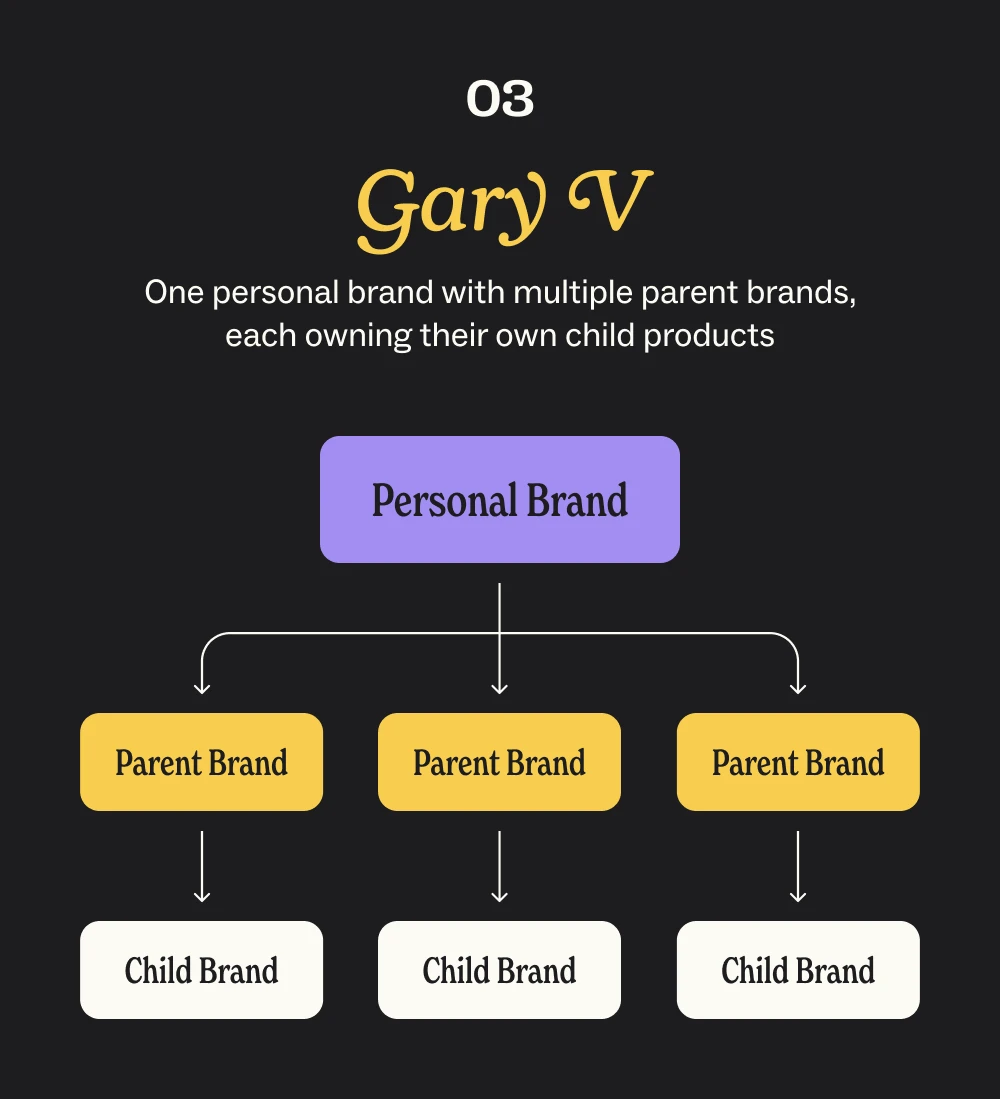
How it works: One personal brand with multiple parent brands, each owning their own child products.
Example:
- Personal brand: Gary Vaynerchuk
- Parent brand 1: VaynerMedia
- Parent brand 2: VaynerX
- Child brands: Agencies, investments, products
Pros:
- Diversified risk
- Can serve different audiences
- Multiple exit opportunities
- Clear segmentation
Cons:
- Extremely resource-intensive
- Complex to manage
- Potential audience confusion
- Risk of diluted focus
Best for: Experienced creators with significant resources who want to build across multiple businesses.

How it works: A strong parent brand endorsed by the creator but able to stand independently.
Example:
- Personal brand: Shan Boodram
- Parent brand: Lovers
- Child brands: Lovers Community, Lovers Letters, Lovers podcast
Pros:
- Benefits from creator credibility without full dependence
- Consistent look and feel across properties
- Easier team and operational scaling
- Creates institutional value
Cons:
- Significant upfront investment
- Complex messaging
- Harder to separate products if divesting
Best for: Established creators transitioning to more scalable brands without plans to divest.

How it works: Personal brand sits above a parent company owning multiple unrelated child brands.
Example:
- Personal brand: MrBeast
- Parent brand: Beast LLC
- Child brands: Feastables, Beast Philanthropy, Viewstats
Pros:
- Maximum diversification
- Each brand has independent identity
- Reduced risk if one fails
- Multiple revenue streams and exit opportunities
Cons:
- Requires enormous resources
- Highly complex to maintain
- Risk of brand confusion
Best for: Mega-scale creators with significant capital and management capability.
The Question Every Creator Needs to Ask
Do you want to be the brand or build a brand?
- Be the brand: Optimized for immediate growth and simplicity. You are the product.
- Build a brand: Optimized for long-term value and scalability. You are building an asset.
The right path depends on:
- Timeline (quick wins vs. long-term value)
- Risk tolerance (personal dependency vs. complexity)
- Resources (time, money, team)
- Exit strategy (lifestyle business vs. sellable asset)
The Bottom Line
Traditional brand architecture assumes you’re starting with a company. Creator businesses start with a person.
That extra layer changes everything about how to build, scale, and exit a business. There’s no universal right answer. The best brand architecture is the one that aligns with your goals, resources, and time horizon.



















